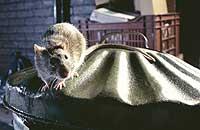The genome of the laboratory rat in sight
They say it can be an important step against human diseases. In fact, this animal is very important in research and knowing its genome will be of great use to differentiate significant results. According to scientists, rats are equivalent to most genes involved in human diseases.

In addition, the comparison of the three known genomes will help to understand the evolution of mammals. Rats and mice have seen that they have had more mutations than humans and evolved faster. This is due to generation time, as rodents multiply much faster. Some gene groups have developed more in rats, such as anti-toxins and olfactory receptors, which can guide physiological differences between species.
Rat data show that 40% of the current mammal genome has been developed from the last common ancestor. These genes will be especially important when investigating the genomes of other mammals.
Buletina
Bidali zure helbide elektronikoa eta jaso asteroko buletina zure sarrera-ontzian











